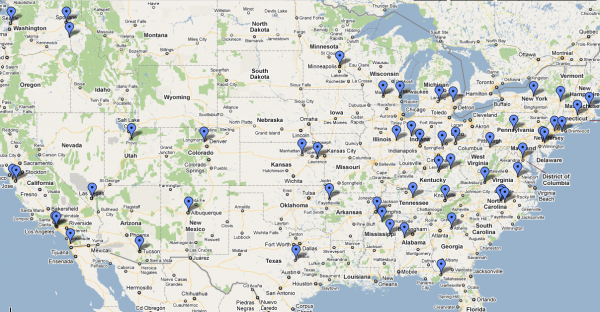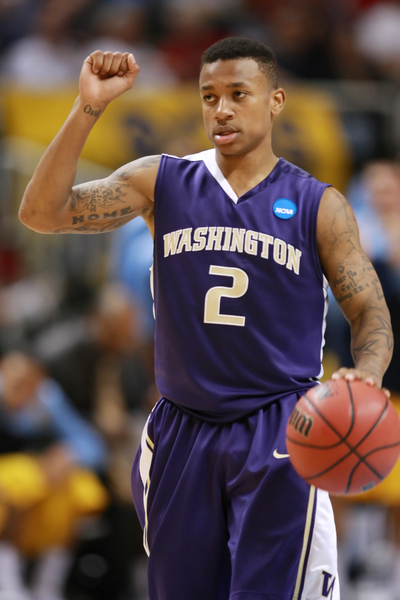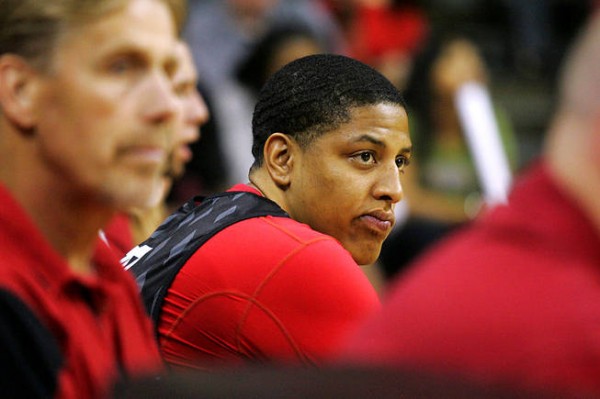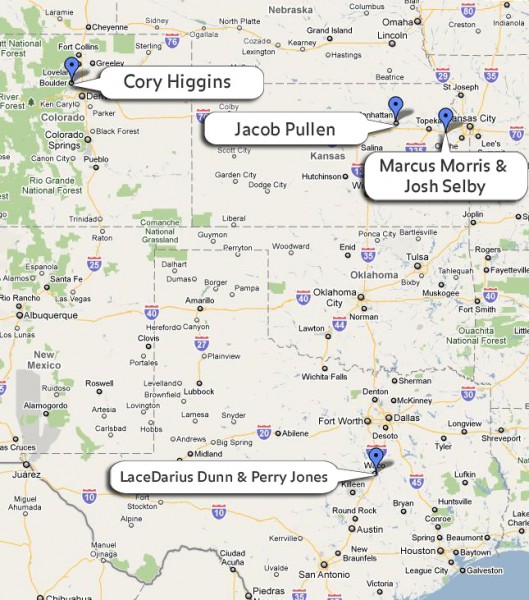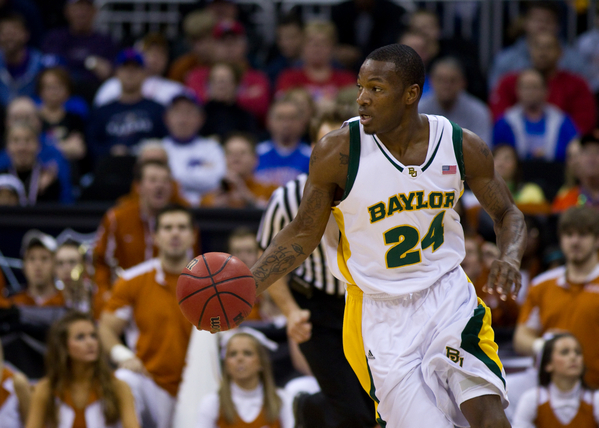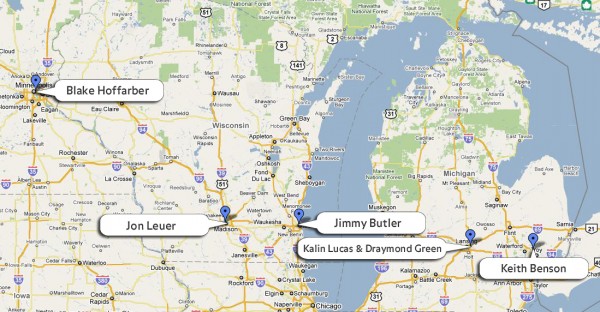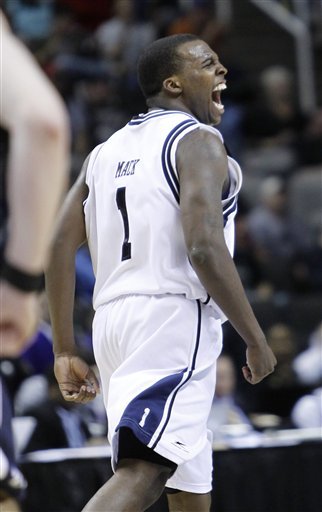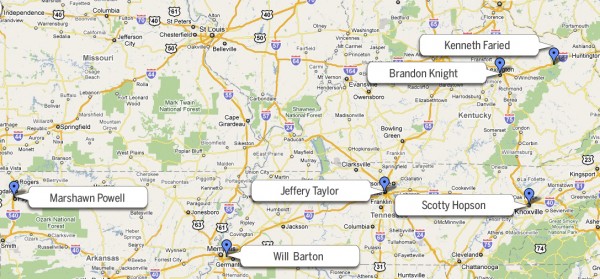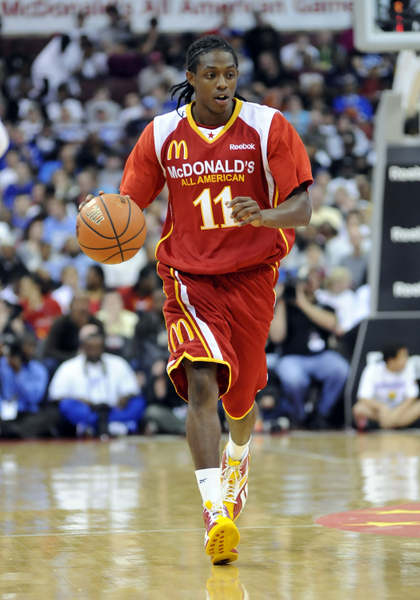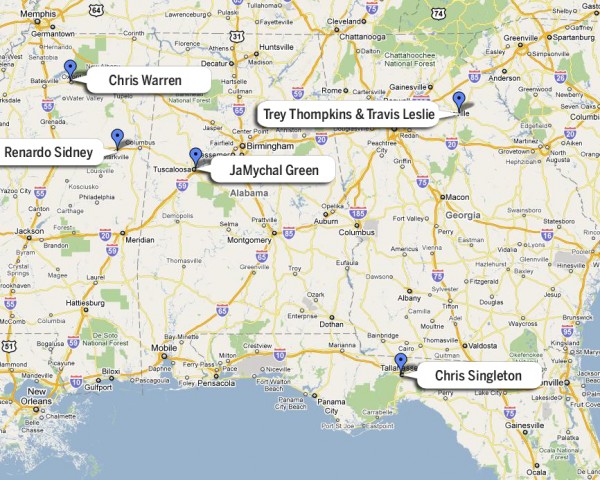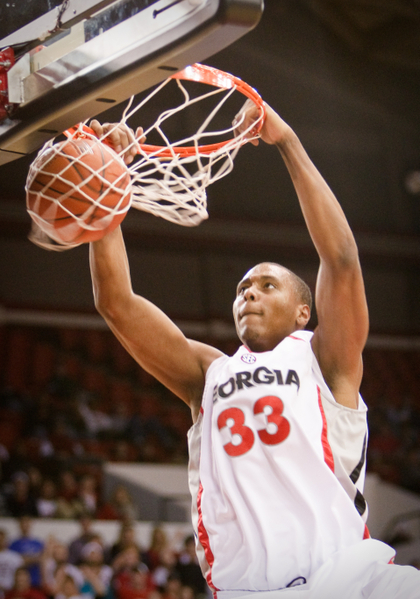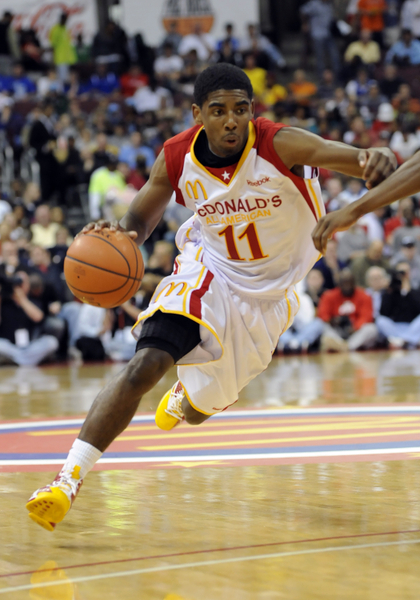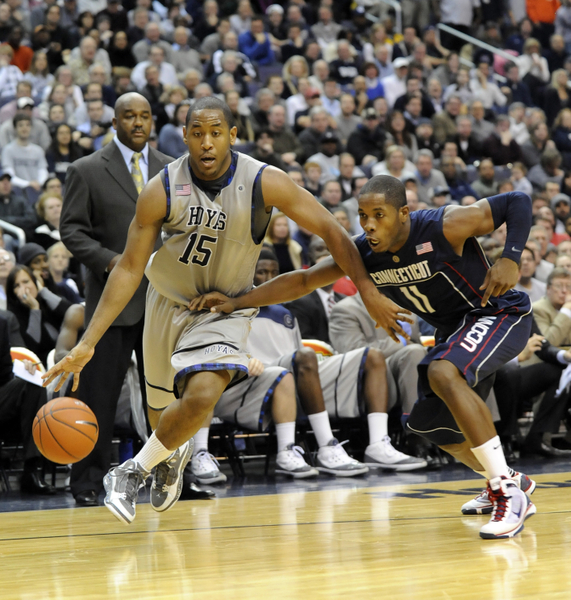RTC 2010-11 Impact Players: National Wrap-Up
Posted by rtmsf on November 8th, 2010Over the past month-plus, we’ve been presenting our RTC Impact Players for the 2010-11 season. From coast to coast and the Canadian border down to Mexico, we’ve selected the sixty players nationally who we believe will have the most impact on the game this year. Each of the ten geographic regions was allotted five “starters” and a “sixth man,” an artificial construct that was easy to fill in some areas while much more difficult in some of the others. In case you’ve missed the series along the way, this post will serve as your wrap-up. We’re rank-ordering the ten “teams” by geographic region and list some of the near-miss players in each one. Each regional post has a much more extensive writeup on each player chosen, so be sure to click on its respective link if you’re looking for additional information. Here’s the view of the 2010-11 college basketball world from 500,000 feet.
The Ten Regions
(* denotes current injury, suspension or ineligibility)
1. Lower Midwest Region (OH, IN, IL). Wow, and imagine if Robbie Hummel hadn’t gotten hurt. Another group of first-rounders has everything, but what really sets this team apart is the inside dominance that Sullinger and Johnson can impose. There isn’t a region on our list this year that would be able to stay out of foul trouble against those two, especially with the heady play of Mack, McCamey and Moore finding the big men in the right spots time and time again. It’s no coincidence that the nation’s best conference — the Big 10 — has its footprint located here.
- Shelvin Mack, G, Butler
- E’Twaun Moore, G, Purdue
- Chris Wright, F, Dayton
- Jared Sullinger, F, Ohio State
- JaJuan Johnson, C, Purdue
- Demetri McCamey, G, Illinois (6th)
Near Misses: William Buford, Ohio State; Maurice Creek, G, Indiana; John Shurna, Northwestern
2. South Atlantic Region (VA, NC, SC). Obviously, if you can’t find a space for a likely all-american like Nolan Smith, this is a sick team. Its only weakness is that other than Tracy Smith, it is extremely perimeter-oriented. Granted, nobody can put a more talented five on the floor, but if a team like the above can pound the ball inside on them, that could make the difference.
- Kyrie Irving, G, Duke
- Malcolm Delaney, G, Virginia Tech
- Kevin Anderson, G, Richmond
- Harrison Barnes, F, UNC
- Kyle Singler, F, Duke
- Tracy Smith, F, NC State (6th)
Near Misses: Nolan Smith, Duke; Andrew Goudelock, College of Charleston
3. Plains/Mountains Region (KS, CO, WY, OK, TX). This is a ridiculously talented region, with first-rounders everywhere on the floor. The only possible issue would be who would be willing to sacrifice for the betterment of the team, but if Selby is eligible to run the show, we’re not sure there’s a much better group anywhere else in America. This region is so strong we had to leave a high-major conference POY (Culpepper) off the team. Wow.
- LaceDarius Dunn*, G, Baylor
- Jacob Pullen, G, Kansas State
- Perry Jones, F, Baylor
- Marcus Morris, F, Kansas
- Cory Higgins, F, Colorado
- Josh Selby*, Kansas (6th)
Near Misses: Alec Burks, Colorado; Gary Johnson, Texas; Randy Culpepper, UTEP






























